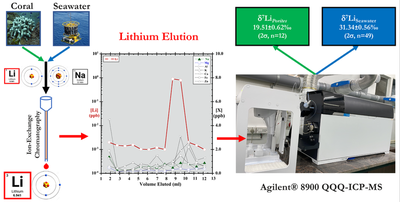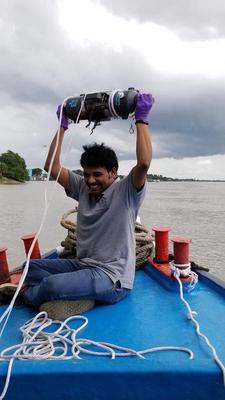Geochemical Research Unit And Laboratories
Weathering of uplifted continental rocks consumes carbon dioxide and transports cations to the oceans, thereby playing a critical role in controlling both seawater chemistry and climate. The knowledge of temporal evolution of seawater chemistry can help us decipher the interplay between tectonic collision driven orogeny of mountains and their subsequent chemical weathering driven drawdown of atmospheric CO2. These two forces are the prime modulators of global climate on million-year timescales. The products of chemical weathering are transported by rivers. Thus, quantifying the roles of physio-chemical factors controlling river chemistry in the modern day is equally important to understand the long-term evolution of seawater chemistry. My lab group focuses on the application of non-traditional stable isotope systematics like lithium, magnesium, and potassium, to study the geogenic evolution of riverine chemistry as a function of reactive transport of dissolved and suspended fractions.

Reconstruction of atmospheric carbon dioxide concentration beyond the temporal expanse of Antarctic ice-cores holds the key to constrain “climate sensitivity” in a warming world. The isotopes of boron sequestered within the calcium carbonate shells of marine organisms is an exciting prospect. However, such measurements are analytically challenging. My lab group is involved in the reconstruction of past climate through the application of boron isotopes and other proxies of seawater chemistry (B/Ca, Mg/Ca, and Sr/Ca). We have dedicated labs for handling of carbonate samples with pico-gram level of blanks.

The surficial and sub-surficial waterbodies of India are being polluted by both anthropogenic and geogenic emissions. The health of key waterbodies that support large centres of population are of concern since the level of pollution (by transitional and heavy metals) has reached a dangerous level. We are focused on quantifying the levels of pollution and designing innovative yet cost effective pathways of remediation.


